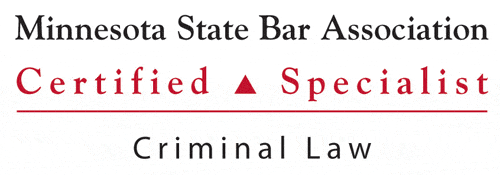You may think that assault is assault, but that’s not the case under Minnesota law. There are different types of assault you can get charged with, each with unique penalties.
Simple assault and aggravated assault are two very different things. If you’re facing charges for either of these, it’s a good idea to understand the basics of assault charges in Minnesota and what can happen if convicted of a particular type of assault. Read on to find out what you need to know.
What Is Assault in Minnesota?
Minnesota considers assault to be a crime of violence. In general, the level of assault you get charged with depends on the injuries the victim suffered and how you are connected to them. However, assault doesn’t mean a person has to be injured for someone to get charged.
Under Minnesota law, assault is when an intentional act causes harm to another physically or puts them in reasonable fear of physical harm. In other words, if you make someone fear harm – even if you never touch them – it can be considered assault
Two Types of Assault in Minnesota
Minnesota puts assault into two separate categories: simple and aggravated. These categories of assault are based on the following:
- the use of a weapon in the commission of the crime and
- the degree of injuries the victim experiences.
Simple Assault
When you inflict bodily harm intentionally on someone else, attempt to, or take actions that lead the victim to believe they are in danger of harm, this is simple assault. Pushing, shoving, making threats, hitting with an object, or raising a fist at someone are all considered to be simple assaults.
Aggravated Assault
A person commits aggravated assault in Minnesota if they intend to cause harm to another person with a deadly weapon. A deadly weapon can mean items such as guns or knives and objects that can cause injuries or even death to the victim, such as a baseball bat. If the victim gets harmed seriously, the perpetrator will receive a felony charge.
Different Degrees of Assault
Aside from having two categories of assault, Minnesota also has five different degrees of it.
They are:
Assault in the First Degree
The most severe level of assault is charged when the victim endures great bodily harm. It can send you to prison for up to 20 years if convicted.
Assault in the Second Degree
This level of assault involves using a deadly weapon – even if the weapon is merely present during the commission of the crime but never used. If convicted, you can face up to seven years in prison. However, if a weapon is used and the victim is harmed, the prison sentence can be up to 10 years.
Assault in the Third Degree
If a minor gets assaulted or the perpetrator has a history of abuse against children, including bodily harm, this level can be charged. A conviction can result in a five-year prison sentence.
Assault in the Fourth Degree
This is a misdemeanor charge, but a conviction can still result in 12 months behind bars. Moreover, it can be escalated to a felony in certain circumstances, leading to a prison sentence of three years.
Assault in the Fifth Degree
Another misdemeanor, a conviction for this level of assault, can result in up to three months in jail.
About the Author:
Christopher Keyser is an AV-Preeminent rated criminal and DWI defense attorney based in Minneapolis who is known for fighting aggressively for his clients and utilizing innovative tactics to get the most positive results. He has been featured in numerous media outlets due to the breadth and depth of his knowledge and has been named a Certified Specialist in Criminal Law by the Minnesota Bar Association. Mr. Keyser is Lead Counsel rated, and he has received recognition for his criminal law work from Avvo, Expertise, Super Lawyers, The National Trial Lawyers, and more.







